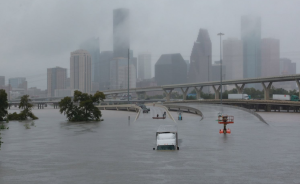By Joel Nelson on March 15, 2018 in News
A new research bulletin from Yardi Matrix assesses th e ongoing recovery of multifamily markets in U.S. areas hit hard by hurricanes, wildfires and other natural disasters in 2017.
e ongoing recovery of multifamily markets in U.S. areas hit hard by hurricanes, wildfires and other natural disasters in 2017.
Three hurricanes inflicted about $110 billion in property damage and $300 billion of economic loss in Texas, Florida and Puerto Rico, the bulletin notes, with the affected counties in the two states accounting for about 13% of total U.S. housing permits. Relocation by renters and homeowners sparked a rapid rise in apartment rents.
Houston, for example, saw a 1.6% increase over the last four months of 2017, reversing about 18 months of decline. While increases were lower in Miami, Tampa and Orlando, this may change as residents displaced from Puerto Rico, which still needs major infrastructure resources, spur demand in these Florida metros. The bulletin predicts that the long-term need for housing will lead to higher occupancy rates, especially in the renter-by-necessity segment.
Another factor impacting the housing recovery is a shortage of construction labor, driven by fewer young people entering the industry and a declining immigrant labor force. “As a result, expect prolonged construction delays nationwide,” the bulletin says.
The report also examines natural disasters’ impact on the insurance market. Property owners in the private insurance market “should brace themselves for not only increasing insurance rates but also tightening terms and conditions of their policies,” the bulletin says, noting that “insurers are increasing deductibles for multifamily portfolios, and changing the deductible structure from a dollar value to a percentage of property value.”
In California, which endured wildfires from San Diego to Sonoma, Proposition 103, an insurance regulatory measure, is expected to moderate rate hikes.
Download the complete bulletin, titled “Flood and Fire: The Multifamily Sector’s Response to Natural Disasters.”


